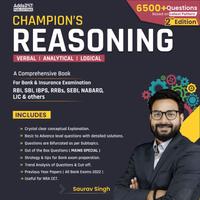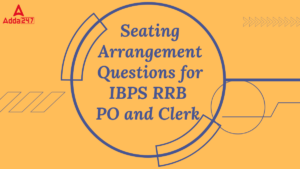Directions (1-4): In the following questions assuming the given statement to be true, find which of the conclusion(s) among given conclusions is/are definitely true and then give your answers accordingly.
Q1. Statements: P > M < X < V; D ≤ L=M; D > S
Conclusions: I. P > S
II. P > V
(a) Only I is true.
(b) Only II is true.
(c) Either I or II is true.
(d) Neither I nor II is true.
(e) Both I and II are true.
Q2. Statements: M > A ≥ P > U; E < R > U; E ≥ L > W
Conclusions: I. M > L
II. W ≤ A
(a) Only I is true.
(b) Only II is true.
(c) Either I or II is true.
(d) Neither I nor II is true.
(e) Both I and II are true.
Q3. Statements: Q ≥ W > X > Z; E > Z; E > C
Conclusions: I. C < Q
II. E ≤ W
(a) Only I is true.
(b) Only II is true.
(c) Either I or II is true.
(d) Neither I nor II is true.
(e) Both I and II are true.
Q4. Statements: L > W < U < B; W ≥ X > P; P > T ≥ K
Conclusions: I. L > T
II. K≤ U
(a) Only I is true.
(b) Only II is true.
(c) Either I or II is true.
(d) Neither I nor II is true.
(e) Both I and II are true.
Directions (5-8): In the following questions assuming the given statement to be true, find which of the conclusion(s) among given conclusions is/are definitely true and then give your answers accordingly.
Q5. Statements: T > K ≥ B; S = C < B > P
Conclusions: I. T > S
II. P < K
(a) Only I is true.
(b) Only II is true.
(c) Either I or II is true.
(d) Neither I nor II is true.
(e) Both I and II are true.
Q6. Statements: T >N < R; N =S > Q; Q =Y < B
Conclusions: I. T > B
II. Y < R
(a) Only I is true.
(b) Only II is true.
(c) Either I or II is true.
(d) Neither I nor II is true.
(e) Both I and II are true.
Q7. Statements: G > Y; R < A ≤ B; V > M=R; G < B
Conclusions: I. R < G
II. B > V
(a) Only I is true.
(b) Only II is true.
(c) Either I or II is true.
(d) Neither I nor II is true.
(e) Both I and II are true.
Q8. Statements: W > F > V; L < Z < V; L ≥ R =T
Conclusions: I. R < W
II. T < Z
(a) Only I is true.
(b) Only II is true.
(c) Either I or II is true.
(d) Neither I nor II is true.
(e) Both I and II are true.
Q9. In which of the given expressions does the expressions “V < D” and “U > S” definitely hold true?
(a) P= D < U ≥ H = L > V > S
(b) S > P = V ≥ Q = U < D >H
(c) P < U > V < H =W < D > S
(d) V= S < Q = D < U = O < P
(e) None is true
Q10. Which of the following expressions does the expression “J > D” and “P < V” definitely hold true?
(a) P ≥ J ≥V = L > S > D
(b) P < S ≥ D = N=U < V<J
(c) J ≥R > B ≥ P =V ≥ D
(d) V > S =P < Q < D < J
(e) D ≥ T = V ≥ H = P < J
Solutions
S1. Ans. (a)
Sol. I. P > S – True
II. P > V – False
S2. Ans. (d)
Sol. I. M > L – False
II. W ≤ A – False
S3. Ans. (d)
Sol. I. C < Q – False
II. E ≤ W – False
S4. Ans. (a)
Sol. I. L > T – True
II. K≤ U – False
S5. Ans. (e)
Sol. I. T > S – True
II. P < K – True
S6. Ans. (b)
Sol. I. T > B – False
II. Y < R – True
S7. Ans. (d)
Sol. I. R < G – False
II. B > V – False
S8. Ans. (e)
Sol. I. R < W – True
II. T < Z – True
S9. Ans. (d)
Sol. So, among all the given options, expression given in option (d) is correct to make the expressions (V < D and U > S) definitely true.
S10. Ans. (d)
Sol. Among the given options, expression given in option (d), make the expression (J > D and P≤ V) definitely true.



 . . . .
. . . .
 GA Capsule for SBI Clerk Mains 2025, Dow...
GA Capsule for SBI Clerk Mains 2025, Dow...
 The Hindu Review October 2022: Download ...
The Hindu Review October 2022: Download ...
 Seating Arrangement Questions for IBPS R...
Seating Arrangement Questions for IBPS R...





